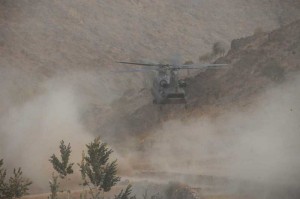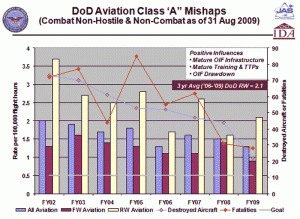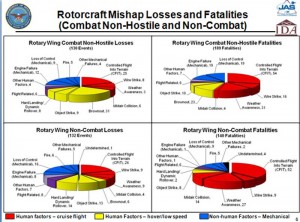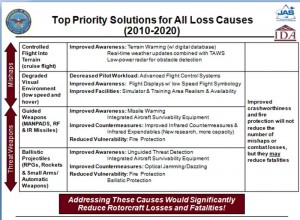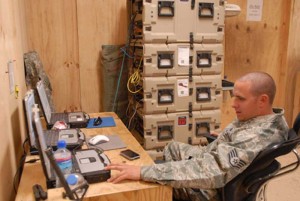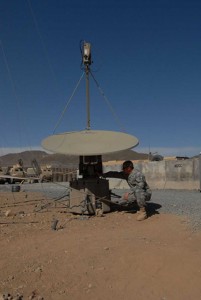The acquisition of new tankers for the USAF remains challenging, as it gets underway for the third iteration. Virtually every aspect of the bids has been contested in blogs, newspaper, the GAO and commented on by various pundits. Whether the politics surrounding the bids can be attenuated to ultimately serve the true purpose and actually provide capabilities to the warfighter remains to be seen.
But what is clear is that the current fleet is old at present and yet will remain an important element of force projection and with it comes high maintenance and sustainment cost.
The second piece that parallels this is the rate of acquisition for the new tankers is at present so slow that the first received airplanes will be ‘overage’ by the time the last of the ‘new’ tankers is integrated into the fleet. This will prove unrelenting to the already burdened supply chain.
The aging of a supply chain also adds its own costs, as items, which are produced by live commercial lines, have to be replaced by program specific historical museum pieces. And the modernization of an old fleet, with the known problems of aging airframes is expensive as well.
The present tone of the debate suggests simply that the old will be replaced by the new and as one pundit puts “a new gas station will be in the sky for the fleet.” Such a characterization misses the likely impact of the new platform on sustainability (which will be the subject of a later sldinfo.com piece) or, as discussed here, on the impact of a new capability, refuelability.
Indeed, though EADS and Boeing have tankers flying in allied fleets using comparable airframes to those likely bid, what would be new with the US tanker is its capability of being refueled in flight. This capability, as its importance becomes more recognized, might well allow the US to export off of the US line into the global market, allowing allies and partners to realize the full potential.
There are several key advantages of refuelability.
First, recognizing that the expected longevity of not just the present fleet, but as well the projected fleet, the issue of long term maintenance needs to be addressed as an operational issue as well as a maintenance issue. Major stresses, and at times clear tactical advantage can be realized by taking advantage of the fact that the new tanker aircraft can take off with a limited load of fuel to maximize operations costs. It can then be refueled while on station to then in turn provide full loads to the fleet.
Second, the mix of tanker aircraft can be operationally useful as non-refuelable tankers can offload their fuel to on-station tankers and return to base with a minimal fuel load to maximize their expected life, and minimize landing impacts creating operational savings. As this concept of operations is extended, the new tankers will allow huge extensions of range.
Third, the tanker aircraft could have crew rest areas, as some have today, but consider days not hours of operation and thus be on station for a considerable period of time. This would allow an initial deployment to feed the unmanned and manned vehicles conducting an operation.
Because Fifth generation aircraft might really focus on command and multi-mission support and, in turn, new UAVs will be designed and built with this capability in mind, an ability to provide ongoing fuel support becomes more important than it does now. The value of the next generation of UAVs to be refueled will be significant; and having a core tanker fleet on station for a long period of time can facilitate the ability of the fleet to operate C4ISR missions.
Fourth, refuelability coupled with the increased range of the new tankers will allow the tanking fleet to essentially bridge refueling and thus be allowed to operate much further from the operational zones than currently permitted by the old fleet. An ability to operate further away from operational areas will be of increasing significance as adversaries increase their reach and create contested airspace where our fleet now operates freely.
Fifth, refuelabilility and the capability of being aloft for long periods of time will also allow the imagination of operators to shape new options as well. There has been thought developed which would permit the tanker fleet to become important communications and ISR assets. But as we design high loiter UAV’s to be communication assets, this asset will muscle into that space. The new tankers might then have routers and associated ISR transmitters on them to contribute to the distributed operations central to new concepts of air operations.
In short, refuelability can be an important discriminator and have a profound influence of future concepts of operations. Its significance should be recognized by future planners, perhaps changing the debate from ‘The Politically Charged’ to ‘The Strategically Charged’ tanker debate. Simply keeping the old tankers in place, replacing them one for one, reduces the capability boost, which a new refuelable tanker can bring to the mix.
———-
***Posted October 19th, 2009


